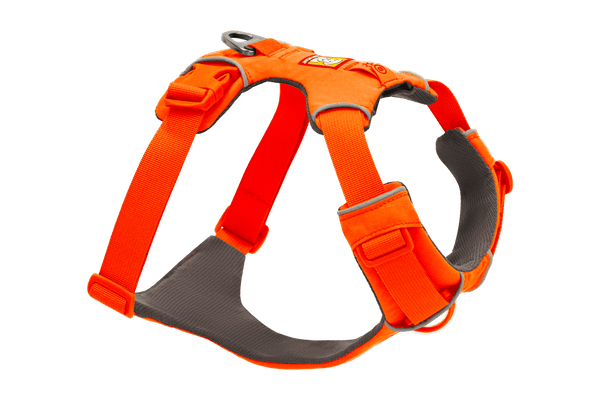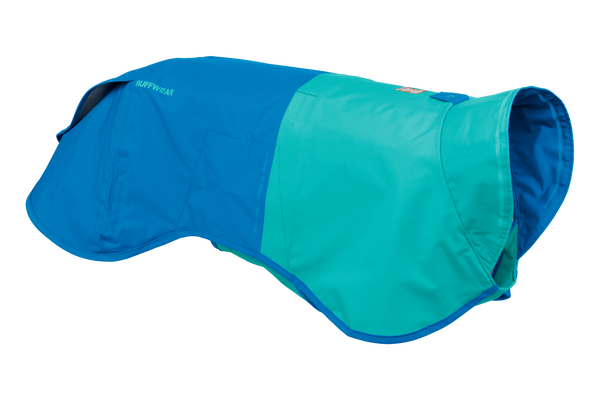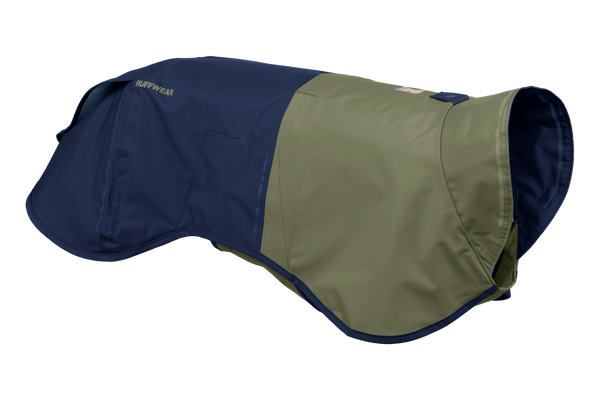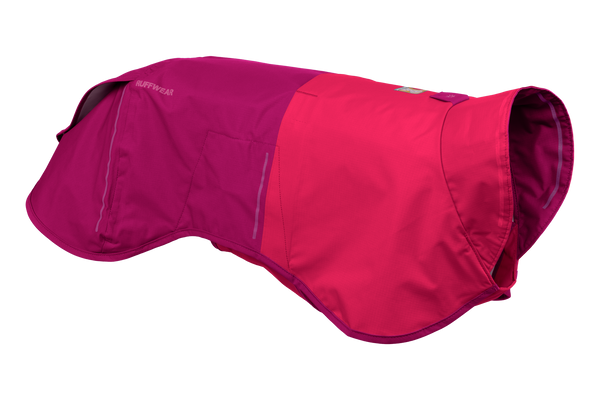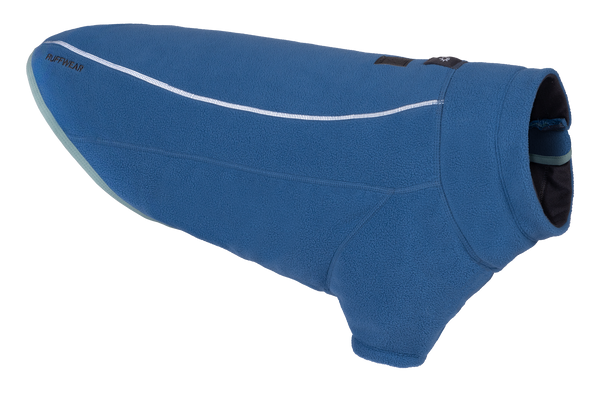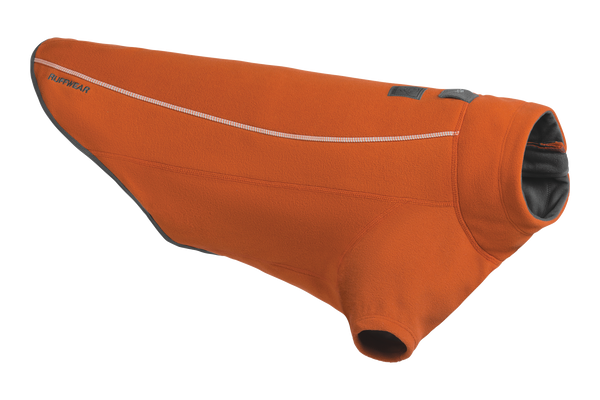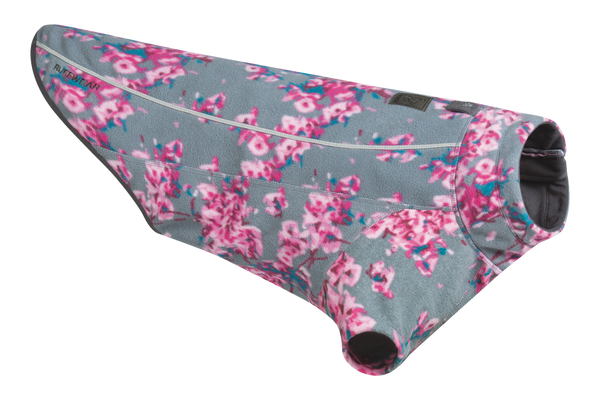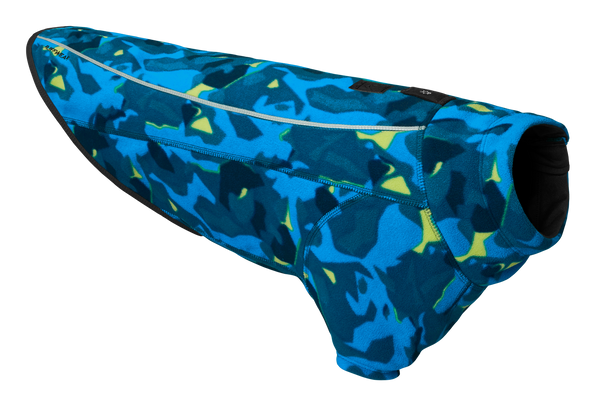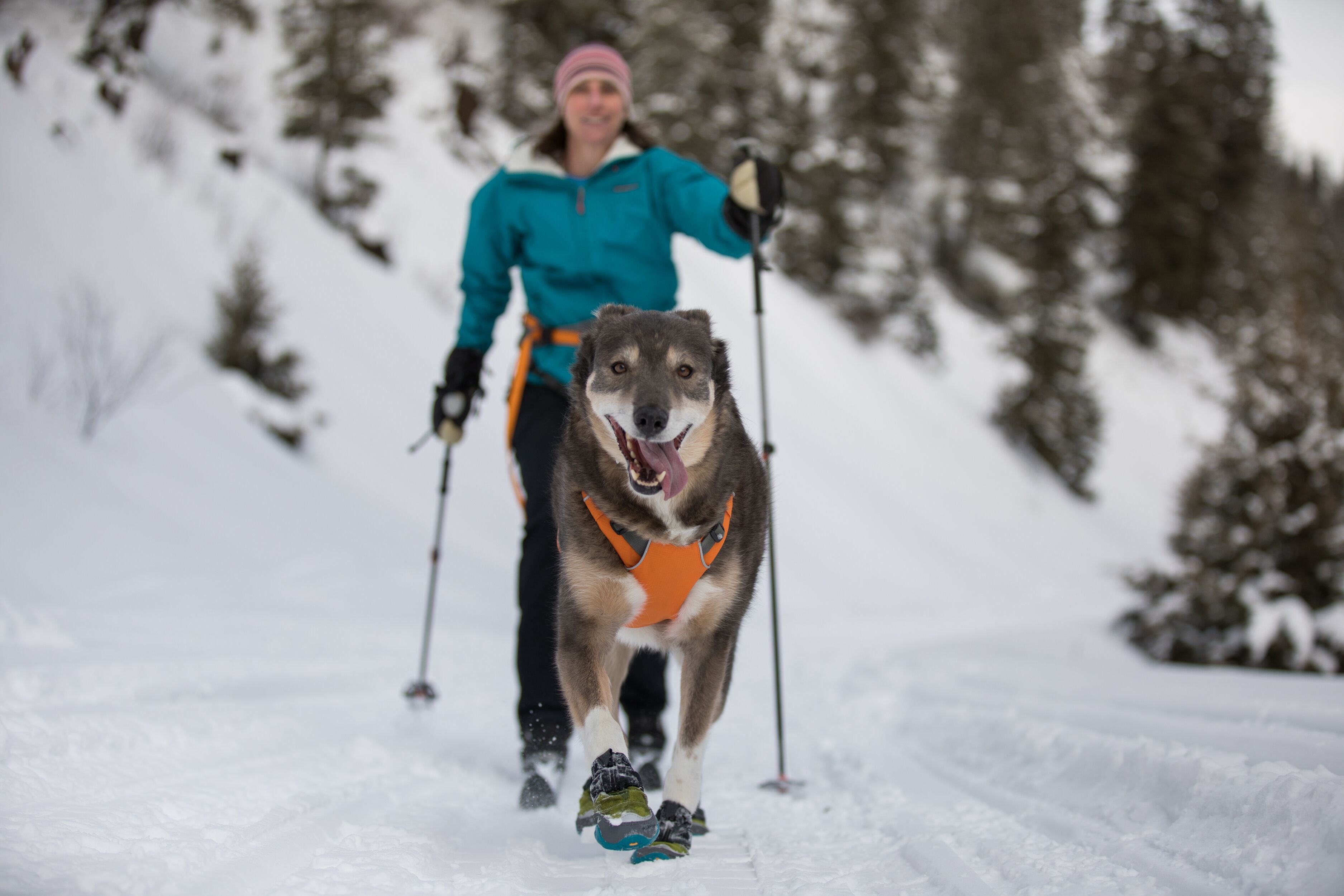Pfotenschutz im Winter: Polar Trex™ Hundestiefel
Was ist los mit Paws & Winter?
An manchen Tagen kann Ihr Hund unbeschadet durch den Schnee rennen. An anderen Tagen können die winterlichen Witterungsbedingungen zu rissigen , abgeschürften oder mit unangenehmen Schneebällen vollgestopften Pfoten führen , wodurch der Schneetag vorzeitig endet.
Was tun Sie, wenn das Springen aufhört und das Pfotenlecken beginnt?
Die Polar Trex™-Stiefel könnten die Lösung sein, die Ihnen und Ihrem Hund die Freiheit gibt, auch in den Wintermonaten weiter auf Entdeckungsreise zu gehen.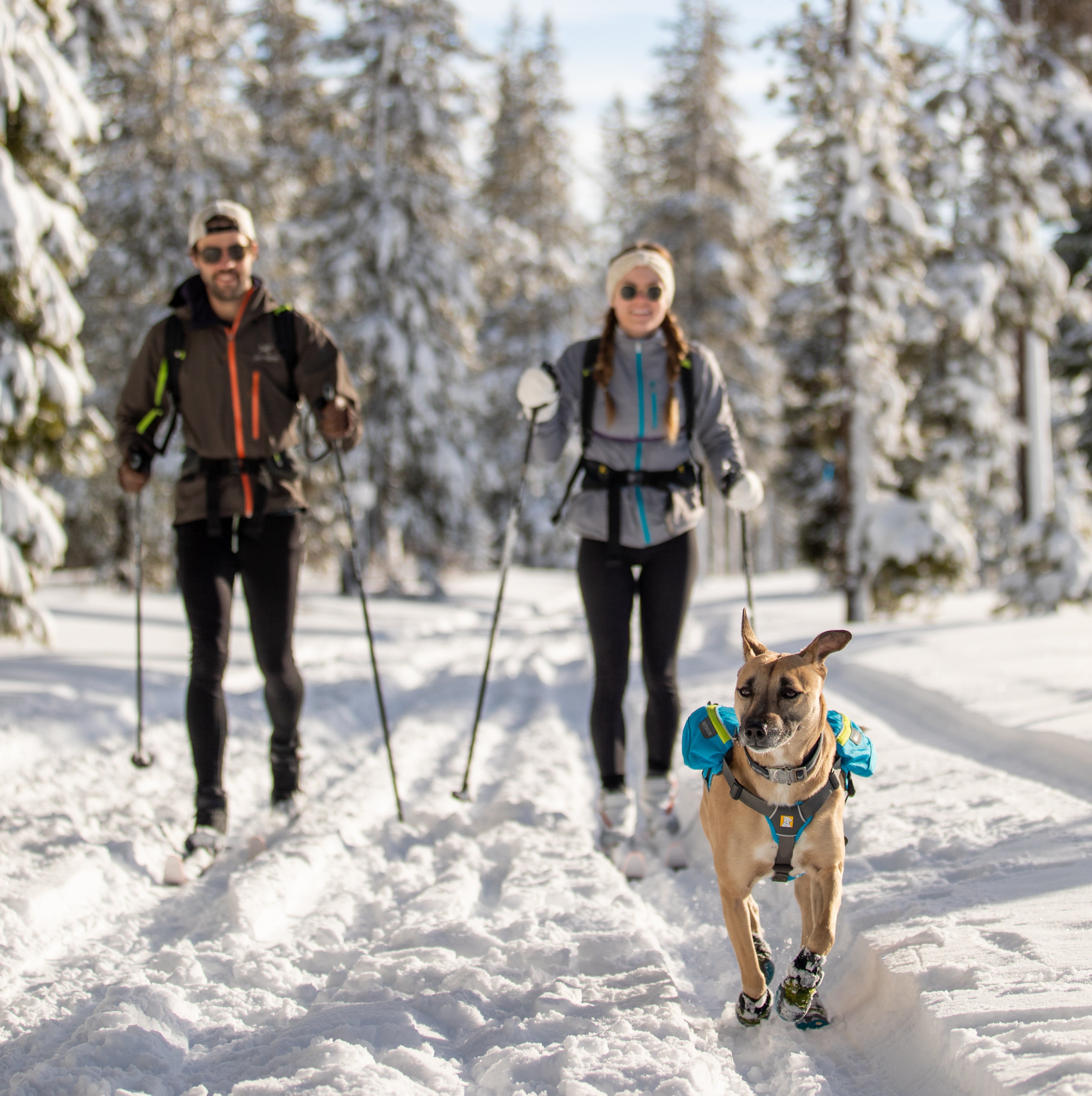
Welche Winterbedingungen erfordern Hundestiefel?
Wir haben uns mit dem Gründer von Ruffwear, Patrick Kruse, getroffen, um über alles rund um Pfoten und Stiefel zu sprechen. Er nennt drei häufige Pfotenprobleme im Winter:
- Schneeansammlung zwischen den Pfotenballen
- Trockene oder rissige Polster
- Abgeriebene, abgeschabte Bremsbeläge
Diese können je nach den Bedingungen, in denen Sie sich befinden, auftauchen. Er hatte eine gute Analogie.
„Wenn es eine harte Masse mit Eiskristallen ist, ist der Schnee wie grobes Sandpapier . Wenn Sie beim Skifahren im Frühjahr schon einmal gestürzt sind und Eiskristalle vorhanden sind, bekommen Sie so etwas wie Schürfwunden .
Vielleicht hat Ihr Hund kein Problem mit tiefem Schnee oder Kälte, aber dann bringt der Frühling diese rauen Bedingungen mit sich. Das ist eine Gelegenheit für Sie, nach abgeschürften oder abgeschürften Pfotenballen zu suchen.“
Überlegen Sie, in welcher Art von Schneebedingungen Sie sich befinden . Gepresster Schnee, leichter Pulverschnee oder Eiskruste. Schnee mit hohem Feuchtigkeitsgehalt bringt seine eigenen Herausforderungen mit sich. Seine Nässe verleiht ihm eine klebrige Qualität.
Wenn Sie noch weitere Variablen hinzurechnen – die Fellart Ihres Hundes, die Luft- und Schneetemperatur, die Luftfeuchtigkeit, die Jahreszeit –, müssen Sie eine Vielzahl von Bedingungen berücksichtigen.
Funktionieren Hundeschuhe wirklich?
Sogar Ruffwears furchtloser Anführer Patrick war anfangs ein Hundestiefel-Skeptiker.
Er war nicht davon überzeugt, dass Hundeschuhe notwendig waren. Er dachte sich: „Welcher Hund mit Selbstachtung würde Stiefel tragen?“
Dann hatte er ein Erlebnis mit seinem Hund, das seine Meinung für immer änderte.
Patrick war mit seinem energiegeladenen Australian Cattle Dog Otis auf einem lokalen 17 Meilen langer Mountainbike-Rundweg. Danach wollte Otis ein paar Tage lang nicht auf den Beinen sein, und Patrick nahm an, dass er seinen aufgeweckten Welpen endlich müde gemacht hatte.
Alles änderte sich, als es an der Zeit war, einige frühe Prototypen der ersten Hundeschuhe von Ruffwear zu testen. Sie nahmen dieselbe Route in Angriff – durch einen Bach, einen Fluss, Vulkangestein und Asphalt. Aber als sie dieses Mal zurückkamen, war Otis nach nur 30 Minuten Pause wieder auf den Beinen – sein energiegeladenes Selbst.
Es hat sich herausgestellt, dass die Wanderwege Auswirkungen auf die Pfoten haben. Wenn man sie schützt, erholen sie sich schneller und sind bereit für das nächste Abenteuer.
Müssen alle Hunde Stiefel tragen?
Verschiedene Hunde können aus unterschiedlichen Gründen im Winter von Stiefeln profitieren. Wenn Sie sich fragen, ob Sie bei Ihrem nächsten Winterausflug Stiefel tragen sollten, bedenken Sie:
- Wird es Eis und raue Oberflächen geben?
- Werden Sie auf Schmelzwasser stoßen?
- Hat sich Schnee zwischen den Pfotenballen Ihres Hundes angesammelt?
Die besten Indikatoren sind, die Bedingungen und Ihren Hund im Auge zu behalten. Und ein Paar Stiefel im Rucksack kann der Schlüssel sein, um das Abenteuer fortzusetzen, wenn sich die Dinge ändern.
- Beginnt Ihr Hund, seine Pfoten zu heben, um dem Schnee zu entgehen?
- Lecken sie ihre Pfoten?
- Machen sie eine Pause, um an ihren Füßen zu kauen?
Patrick drückt es so aus:
„Konzentrieren Sie sich auf Ihren Hund und darauf, was er tut – zum Beispiel stehen bleibt und seine Pfoten leckt. Normalerweise nehme ich Stiefel mit und ziehe sie beim ersten Anzeichen von Unbehagen oder Unbehagen an.
Manchmal weiß ich schon im Voraus, dass ich in anspruchsvollem Gelände mit wechselnden Bedingungen wandern werde. Dann frage ich mich: „Helfen Stiefel dabei, dass die Gruppe weiter vorankommt und verhindern sie, dass wir einen Hund hinaustragen müssen?“
Bewusstsein und Lernen aus Erfahrung helfen Ihnen dabei, zu wissen, wann Sie die Stiefel anziehen sollten. Aber selbst die Erfahrensten unter uns können auf Herausforderungen stoßen, und das ist in Ordnung. Wir haben unsere Stiefel so konzipiert, dass Sie und Ihr Hund alles meistern können, was bei einem Abenteuer auf Sie zukommt, damit Sie gemeinsam weiter auf Entdeckungsreise gehen können.“

Wie wir unsere Polar Trex-Stiefel entworfen haben
Patrick begann 1996 mit dem Entwerfen von Hundeschuhen. Ein Ruffwear-Händler in Colorado hatte eine Anfrage: Könnte er Hundeschuhe herstellen, die tatsächlich an Ort und Stelle blieben?
Im Laufe der Jahre und durch Designaktualisierungen haben Patrick und die Designer von Ruffwear viel dazugelernt, während sie diese Stiefel auf den Trails auf Herz und Nieren getestet haben. Die winterlichen Bedingungen brachten neue Herausforderungen mit sich – wie Eis, Schnee und Feuchtigkeit –, die mit dem Design der Polar Trex Boots gelöst werden mussten.
Viele Hundeschuhe waren damals hoch oben an den Hundebeinen befestigt . Sein erster Gedanke war: „Warum befestigt man sie nicht um die schmalste Stelle der Hundepfote herum?“ Das tat er und es funktionierte.
Darüber hinaus haben wir uns für einen Riemen mit Polyester-Klettverschluss entschieden, um die Stiefel zu sichern. Er ist hydrophob (eine elegante Art zu sagen, dass er kein Wasser aufnimmt) und löst sich in nassen Umgebungen weniger leicht und wird auch nicht durch Schnee und Eis behindert.
Und wenn Sie den inneren Klettverschluss mit einer äußeren Gamaschenschicht aus Polyester schützen, die Sie mit einem Reißverschluss darüber schließen, haben Sie einen winterfesten Stiefel, der mit größerer Wahrscheinlichkeit an den Pfoten Ihres Hundes bleibt.

Gemacht für den Winter: Polar Trex Boots
Der Polar Trex Boot verfügt außerdem über eine von Ruffwear entwickelte Vibram® IceTrek™-Laufsohle – sie bietet Halt auf gefrorenen Oberflächen und eine Barriere gegen Kälte und Chemikalien aus der Schneeschmelze.
Gemeinsam mit Vibram® haben wir ein Stollenmuster (Vertiefungen und Rillen) und Lamellen (dünne Schlitze) entwickelt, das ähnlich wie Winterreifen auf dem Schnee Halt und Halt bietet. Um auch bei Eisbedingungen zu bestehen , mahlt Vibram® Aluminium zu Flocken und mischt diese mit einer Gummimischung, um die IceTrek™-Mischung herzustellen. Diese Aluminiumflocken in der Sohle sorgen für zusätzliche Traktion auf Eis und hartem Schnee.
Die Sohlen sind flexibel, sodass Hunde die Oberfläche, auf der sie stehen, spüren und sich natürlich bewegen können.

So gewöhnen Sie Ihren Hund an das Tragen von Stiefeln
Der ultimative Schlüssel, um Ihren Hund an Stiefel zu gewöhnen? Stellen Sie sicher, dass sie gut passen, damit sie auf dem Trail höchsten Komfort bieten. Das beginnt mit der Wahl der richtigen Größe.
Ruffwear-Stiefel sind in Zweiersets erhältlich, da Hunde oft breitere Vorderpfoten als Hinterpfoten haben. Auf unserer Polar Trex™ -Produktseite finden Sie Größenempfehlungen und in diesem Video erfahren Sie, wie Sie die Pfoten Ihres Hundes messen.
Wenn Sie die richtige Stiefelgröße haben, beginnen Sie hier, bevor Sie sich auf den Weg machen: 6 Tipps zum Einlaufen von Ruffwear-Hundestiefeln .
Bark n' Boot™ Hundesocken sind besonders hilfreich für Hunde mit Afterkrallen und Hunde, die eine etwas engere Passform benötigen. Sie können auch das Anziehen von Hundestiefeln erleichtern, wenn Ihr Hund besonders dickes Fell hat.
Sehen Sie sich unser Polar Trex™-Video an
Weitere Informationen zu unseren Polar Trex-Stiefeln sowie eine Demo zur Anpassung und Einstellung finden Sie in diesem Video:
Mehr als nur Stiefel: Andere Möglichkeiten zum Schutz der Pfoten
- Halten Sie die Zehennägel geschnitten, damit der Stiefel optimal sitzt und die Oberfläche sauberer ist, damit kein Schnee festklebt
- Trimmen Sie das überschüssige Fell an den Pfoten Ihres Hundes
- Musher's Secret wird aus natürlichen, lebensmittelechten Wachsen hergestellt (der halbdurchlässige Schutzschild bildet eine Barriere zwischen Schnee und Pfote)
